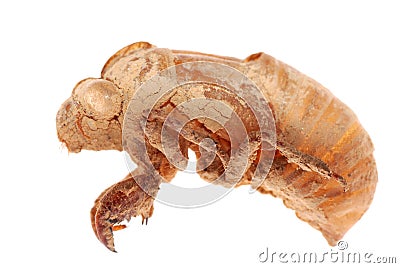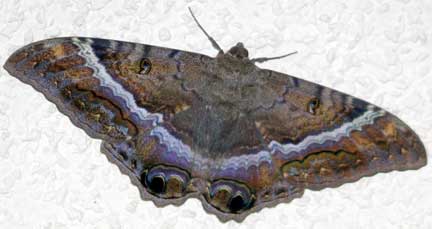In the island chain that calls itself Anacaona, death and undeath play a big part in the every day lives of the natives. There are two main ethnicities. The Sulano are a tawny island people and are the true locals of the islands, having been there for centuries. The Okulek are they darker neighbors from the southern continent, leaving behind their ancestral rain forests to raid and conquer the island folk. Years of warring, conquering, rebellion, and alliance against the incoming colonists have made cultural exchange and assimilation a big thing between these two people. And none has been greater than their similar ideas about death and undeath.
The world is steeped in magic and spirits, but the mortal soul is an interesting creature. It is a larvae, without the same power as an angel, a zemi, or a demon. But within it holds a great potential for growth and enlightenment, that which can awe and frighten the greatest of immortals. A soul that works hard to gain experiences gets closer and closer to reaching their full potential and ultimately reaching enlightenment. It's no wonder, then, that most souls reincarnate to truly know the human experience. Most simply aren't ready to move on.
 |
| There's your soul |
The soul is a larvae, like a cicada nymph. It has layers around it called subtle bodies. These are vehicles of your soul and of the different energies that course throughout your body. When you die, your soul sheds its physical body like a cicada molting for the first time. As you rise through the higher planes of existence, you shed more and more of your subtle bodies until you have reached your afterlife. But, these spiritual molts don't simply just lie around. No, they can come back.
 |
| Your soul shedding its body to move on |
Your physical body is the first vehicle to be shed when you die, and it lays rotting into the earth. The physical body is naturally a prison, so things can get trapped in there. Things like evil spirits or negative energy from outside of creation can reanimate the dead. Most of the time, they simply come to 'life' on their own, using negative energy as their replacement for vital energy (or ki), Zombies and skeletons are the most common ones. They don't have souls in them, though raising them before their soul has had a chance to be judged will pull the soul back into our world and trap them in their rotten husk of their former body. These creatures are mindless, save for an unending desire to spread oblivion. The soul that gets trapped in them becomes tortured by the curse of undeath until they too are mindless drones trapped in the world. These become the wraiths you see tormenting the living. What's curious to many shamans and philosophers in Anacaona is how the default actions of the mortal's body are always malicious and violent.
 |
| The undead molt |
Ghosts share a lot of characteristics with spirits and undead. They are the souls trapped in the spirit world, unable to shed their etheric body and move on. They don't have the negative energy corruption like other undead, but do eventually become angry and highly volatile from being denied their place in paradise. Any number of things can keep a ghost trapped, from an improper burial to unfinished business to vengeance. The only thing that can free a ghost from its etheric body is finding peace with its death. Of course, even with them moving on, they leave behind their etheric body in the spirit world, which, like the physical body, can come to unlife on its own. It feeds off of negative energy and eventually creates a cocoon of ectoplasm. Its psychic chrysalis will hatch and reveal the end of its metamorphosis; the phantom.
Phantoms are the molts of a soul's ethereal vessel and like the physical body, is prone to violence. A phantom is more sinister and methodical in its hate, and many can extend their psychic powers into the environment around them. One must be wary when dealing with a haunting of a phantom, as they flutter towards mortal lives like moths to a flame, eventually snuffing the embers out and claiming a victim. In Anacaona, seeing a swarm of moths is a portent of a phantom in the area. It isn't uncommon for a phantom to take the form of a swarm of moths to surround and suffocate their victims after emotionally torturing them.
 |
| Witch moths are bad omens |
The bats that flutter in the evening sky can be spirits. These creatures are hupia (oo-piya), souls of those that have reached the site of judgement, but instead of staying to be judged or reincarnated, they run away back to the lives. They are like ghosts, but they made it to the land of the dead and out of fear of their judgement, fled back to the world of the living. They have no belly button as they no longer have a human mother, and an hupia can take the shape of how they looked like in life (except for the lack of a navel). They can read the minds of a person, but only to extract imaged of loved ones in that person's life. Using their shape-shifting powers, an hupia can look like a person's loved one. An hupia can also shape-shift into a bat for the day time, which protects them from being destroyed by the sun. The hupia is closely associated with bats, as bats walk the twilight, a realm of both life and death in their religion. Bats also crave the guava, a symbol of life and health, while hunting moths, the symbol of phantoms. It is true that many hunt and devour these spiritual beings. And yet, like bats escaping the light of the morning sun, hupia are always trying to hide from their final judgement.
 |
| A ghost face bat has a very fitting name |
Many try to go back to their everyday lives and a select few do eke out an existence with their loved ones. Others are shunned and forced to go back to the land of the dead. Those that are banished from their old towns make their own hupia villages or become hermits. Hermitage is dangerous though. An hupia is an actual soul that has molted almost all of its subtle bodies, so they have to be around mortal life to remain normal. Being away from life is a full corruption of the soul that cannot be reversed save by the most powerful magics. The hermits become naturally more violent as they succumb to the curse of undeath. The most interesting thing about this is that to the native Sulano, hupias are a stage in the life cycle of reincarnation. Instead of attacking the hupia, many try and console it, hoping to send them off to the land of the dead to be judged. A common method is to keep the hupia in the village and treating everything as normal, giving a psychopomp enough time to find the hupia and take them back.
Undeath is essentially a metaphysical disease that slowly turns the soul into a shell. A mortal soul and body uses the negative energies of oblivion, the abyss that lies outside of our world, as their vital energy. This energy naturally pools and bleeds into areas of death and destruction. It is a corrupting energy that curses its victims, but all that suffer from undeath aren't evil. A disciplined mind can live in relative peace for a time as an undead, but eventually they will succumb to the base, violent instincts of their brethren. Some say it's the corrupting energies of the abyss, while others say it's the denial of a proper afterlife that does it. But until the undead creature is freed, it remains forever tormented in a state of being a walking spiritual molt. At least until someone frees it. Casting a spell like raise dead or something similar will 'kill' an undead, breaking its curse and sending it off to the afterlife. With an hupia, casting a reincarnation spell will actually act as a judgement and bring the hupia back as a newborn child, furthering the theory that they are a part of the reincarnation cycle.
How people treat undead is something I'll get into in another blog post, but it is definitely going to be different than in other settings. I also do want to get more into how subtle bodies play a role in my setting in another blog post. I suppose the take away here is that human souls are pretty much the Pokemon Nincada and undead are Shedinja
 |
| I guess when you put it that way, it seems a lot less cool and spiritual |
No comments:
Post a Comment